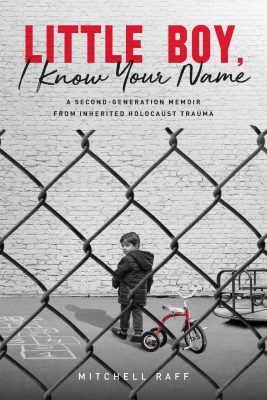Claire Penniman, a free black born in the Germantown section of Philadelphia in the early 1800s, is only six years old when she’s indentured to Raymond and Anna Williams, white landowners who have known her family for years. Elizabeth and Moses, Claire’s parents, have already indentured their older son, Samuel, to the Williams in hopes that both children will learn reading, writing, and arithmetic as well as valuable life skills in exchange for working the land and tending the animals.
Wissahickon Farm quickly becomes part of Claire. She immediately befriends five-year-old Lawrence, the youngest Williams son. As Claire and Lawrence grow older, so does their bond. Anna agonizes over her son’s attachment to the black girl, and her relationship with Claire suffers. Near the end of her twelve-year indenture, Claire and Lawrence’s love leads to pregnancy. The teenagers marry and run away to Haiti, a newly independent country of liberated slaves, to live together in peace as man and wife. Over time, however, hardship and disaster chip away at their love, and Lawrence struggles to find his place in a country where he’s called, the blanc.
Set in the early 19th century when trains are new and steamboats rule, Wissahickon Souls spans thirty years in the life of Claire Penniman. She grows from an impetuous, daring little girl to a strong, independent woman. Claire’s journey, both physically and mentally, showcases the trials of African Americans in the 1800s. Though Claire’s family has a long history of living in freedom in a Northern city, they are far from free. Prejudice lurks around every bend in Germantown and Philadelphia, and the Penniman family keeps a dangerous secret – the family “business.”
For decades, the Penniman family has helped runaway slaves find safe havens by delivering hundreds of “packages” farther north, giving permanent refuge to some of the runaways they save. Through the fictional Penniman family, Devlin shows the commitment and courage of people who risked much in the cause of freedom.
An important motif of Wissahickon Souls revolves around sewing. Claire’s sewing skills become the tie that binds and the fix for broken things. She learns her craft from her mother and grandmother, just as she learns to help slaves to freedom from her father. Claire not only sews clothing to support her family, but she’s also adept at stitching together wounded flesh. Respect for her skill leads to repeated calls for help. Her excellent hand proves racial division can be transcended.
Lawrence and Claire’s love story is a tragedy reminiscent of Romeo and Juliet. The innocence of their first love becomes victim to profoundly rooted racism, including the subtle but soul-sapping racism of Lawrence’s righteous mother. From vicious white men to a raging flash flood, Lawrence repeatedly saves Claire but is unable to stand beside her in public.
In childhood, Claire’s spirit and friendship blind Lawrence to their racial differences. Her pregnancy forces him to confess their love to his parents, who refuse to accept the relationship. After marrying and traveling to Haiti, the teenage couple faces unimaginable daily hardships – made worse by Haitians acceptance of Claire while mocking Lawrence as the blanc.
Lawrence’s increasing alienation drives him to drink and gamble, and he loses Claire’s respect. During ten years of exile, they and their two children struggle to find their place, and their love falters. The death of Lawrence’s father, Raymond, provides the impetus to return to Philadelphia and separate lives – Lawrence to Wissahickon Farm; Claire and the children to her family home.
Though this is Claire’s story, Lawrence’s mother, Anna, plays a crucial role. Despite her recognition of Claire’s intelligence and savvy, Anna’s world is ruled by the impregnable boundaries of cultural presumptions about the African race. The theme of Wissahickon Souls plays out fully through Anna’s soul searching and her ultimate decision.
Even in graphic scenes depicting racism’s horror, Devlin’s writing is beautiful and professional. The historical setting is authentic. Readers will walk alongside Claire on her sprawling journey as a freeborn black in the early 19th century when slavery was the rule of the land.











Leave A Comment